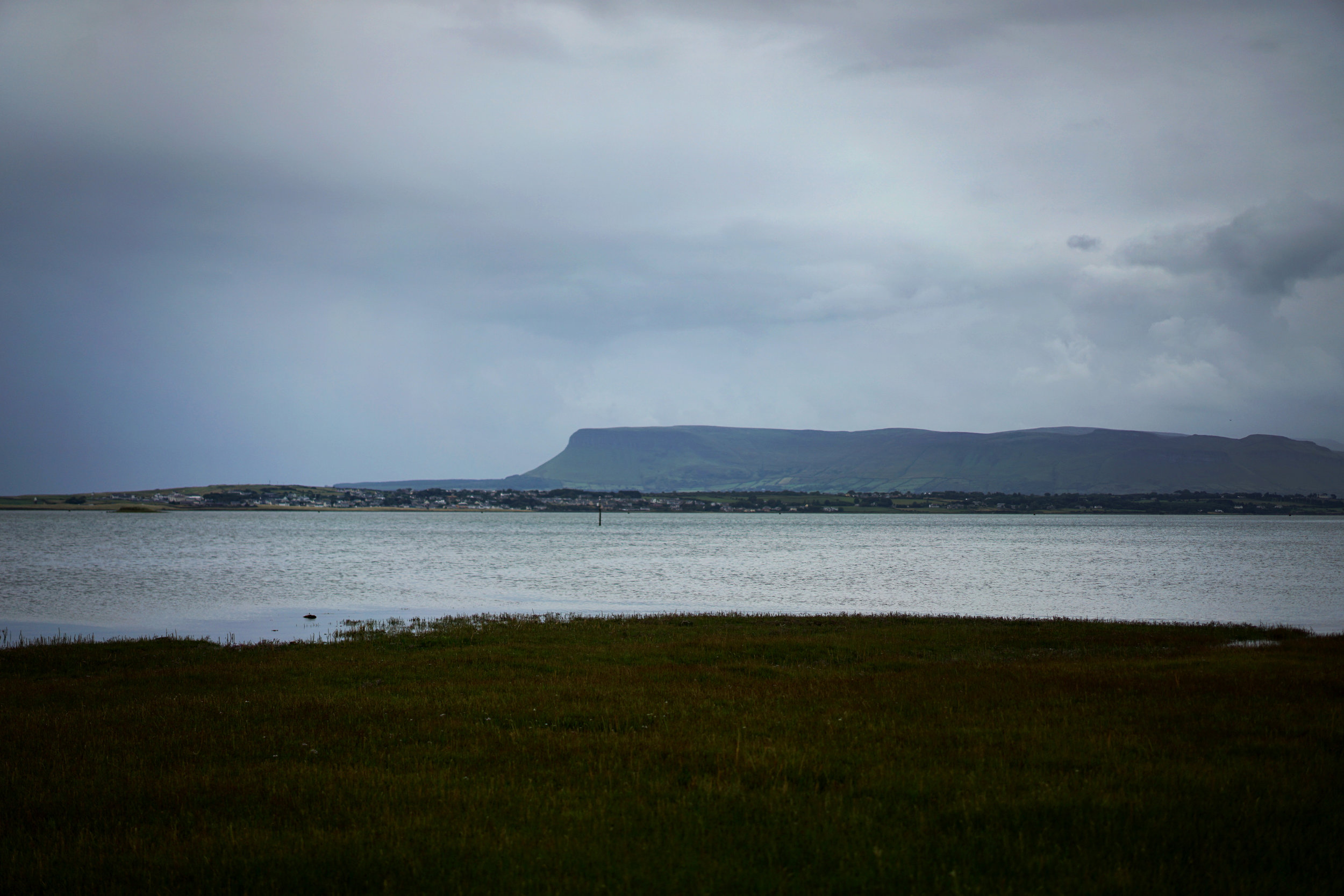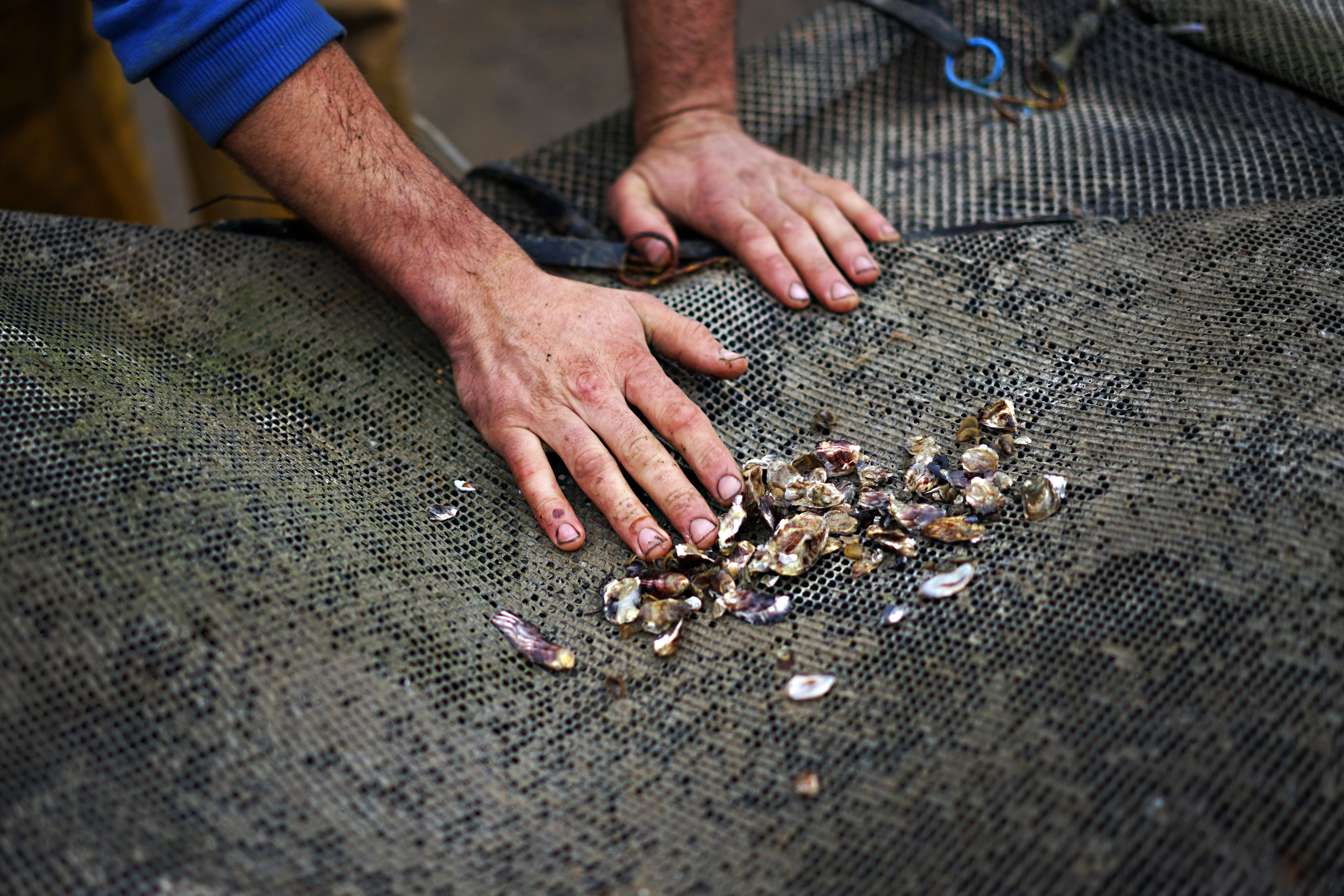Edge of Heaven — Shucking Oysters and Sipping Stouts on the Irish West Coast
There are few pleasures as simple as sucking a freshly shucked oyster from its shell. But such a pleasure can be enhanced by a few other things, such as the environment surrounding you, or the glass of beer in your hand. In this instance my surroundings were those of an oyster farm on the Irish West Coast, on the outskirts of Sligo. And the glass of beer in my hand? The Black Pig, a somewhat-traditional dry Irish stout from The White Hag Brewery, located in the nearby town of Ballymote.
Photography by Matthew Curtis
I was in Ireland to check out The White Hag’s annual beer festival—Hagstravaganza—which also coincided with the Irish brewery’s anniversary, its fourth. But the festival would happen tomorrow, and on the day before, the folks from the brewery were keen to show the gathered brewers—and one journalist—what the local area had to offer.
A bus drove us as far west as it could, before the coastline dictated that we had to make the rest of the way on foot. We clutched at cans of The White Hag’s latest sour, The Puca, as our feet hit the trail. This mixed fermentation beer used lime juice, matcha and mint to astounding affect, providing refrain from the rain whipped up from the adjacent Atlantic Ocean lapping at our faces. There was a moment of pause when the coastal path was interrupted by the striding tarmac of the local airport, which we scarpered across nervously, cans still in hand.
Reaching the end of the bay, we arrived at the oyster farm and were immediately handed glassfuls of dry stout. Excited trails of nitrogenated foam trickled enticingly over the rim. There we were introduced to farmer Glenn Hunter—just Hunter to his friends. He took us through the oyster farming process, opening what looked like something halfway between a sack and a net. The first had relatively small holes and contained juvenile oysters, no larger than a penny, and certainly no good to eat.
““A confession: I am an oyster fiend.””
As the holes in the nets widened, so did the age and size of the oysters within. The net with the largest holes contained 3-year old oysters, ready for consumption—all but for the process of cleaning, sorting and purification, to reduce the risk of them carrying any unwanted diseases. Nobody wants that, after all.
Hunter explained that there’s some 10,000 of these oyster nets floating out in his patch of Atlantic Ocean sat in the bay before us. But what was most surprising was how few of his oysters were consumed in Ireland, with just a couple of local restaurants choosing to serve them. The majority of Hunter, and his family business’—Wild Atlantic Oysters—trade comes in the form of export, with his product being air-freighted to far away places like Hong Kong or Singapore.
Apparently, the locals don’t quite have the taste for them. But this was ok, I thought, I was here now, and was prepared—nay incensed—to make a significant dent in Hunter’s stock. A confession: I am an oyster fiend.
Inside, we arrive at a table laid out with freshly cut wedges of lemon and lime, along with a few bottles of Tabasco. The gathered crowd marvels at the effortlessness with which Hunter shucks an oyster. Taking it in one hand—that hand encrusted with salt and dirt, evident that he had been hard at work pulling in nets that day—he inserts a short blade into the shell.
Finding exactly the right spot in less than a second, he pops the shell in two with a single motion. Careful not to touch the salty fruit within with his fingers, he then uses the blade to clean the shell of any grit or rough edges, before ensuring the oyster is no longer attached to its shell, and serving.
Ignoring the selection of condiments on offer, I slip a first oyster into my mouth. Immediately I note that the texture is creamier than oysters that I’ve tried elsewhere in Europe, and in North America, with an almost fatty quality to the meat. The salinity is soft, but present, without quite the briney intensity of perhaps Maldon oysters. There’s also the faintest whiff of peat smoke, due to the water these oysters reside in being filtered through peat beds, as opposed to rock.
I follow it with a deep sip of The White Hag’s Black Pig. The saltiness of the oyster is all at once enhanced and cleansed by its soft, roasted barley character and dry finish. Tiny bubbles of nitrogen exacerbate the oysters creamy texture. A second, deeper still gulp follows, and the salinity is finally displaced, until it’s time for the next oyster, and the next.
There’s perhaps no simpler pairing in the world. And when the fundamental quality of these basic elements is world class, there really are few things finer. Except, perhaps when those oysters have Tabasco drenched upon them, which—after extensive research—I can confirm is the best way to enjoy Wild Atlantic Oysters. Accompanied by plenty of stout, naturally.
***
With thanks to The White Hag Brewery for flying Pellicle out to Sligo, and stuffing us with stout and oysters.



















